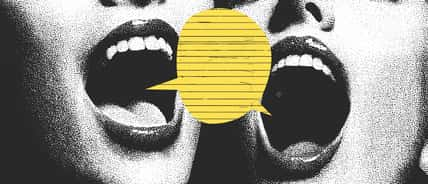She Was An Amazing Woman Who Defied Racial And Gender Stereotypes While Working Hard To Create A More Just World

One of the most influential figures of the civil rights movement is also, unfortunately, one of the most overlooked.
Ruby Hurley was an advocate and activist best known for the incredible work she did through the NAACP in the 1950s and 1960s.
Ruby was born and raised in Washington, D.C. She attended Dunbar High School, where she was taught by influential teachers like Fredrick Douglas’ son. After graduating high school in 1926, Ruby attended Miner Teachers College, where she trained to become a teacher.
Upon graduating from Miner Teachers College, Ruby worked at the Industrial Bank of Washington, an African-American-owned institution. Ruby briefly took law courses at Robert H. Terrell Law School. Although she didn’t get her law degree, she learned a lot about legislation, which she carried with her while working for the National Association for the Advancement of Colored People (NAACP).
Ruby started working with the NAACP in 1939 after the Daughters of the American Revolution canceled a concert they had scheduled for famous opera singer Marian Anderson at Constitution Hall because she was African American. The incident gained lots of attention after First Lady Eleanor Roosevelt resigned from the organization out of protest for their racist decision.
Ruby was on a committee of civil rights advocates from the NAACP who managed to reorganize the concert and have Marian perform at the Lincoln Memorial, which was attended by thousands of people.
Afterward, she worked with the NAACP diligently and was named their national youth secretary in 1943. Ruby worked very hard to get more young people to be a part of the NAACP and what it stood for. She encouraged students to found college chapters, and thanks to her efforts, the NAACP added 25,000 members through youth groups in the early 1950s.
Ruby also traveled around the country to recruit new members for the organization, traveling to some of the most discriminatory states at the time, like Alabama, Florida, Mississippi, and Tennessee. She also worked hard to establish good relationships between the NAACP branches in all locations, from the South all the way to the main branch in New York City.
When the NAACP established its new Southeast Regional branch in 1952, Ruby was named its regional secretary and eventually became its director. She worked with this branch through the 1950s and 1960s and accomplished amazing things.

Under Ruby’s supervision, the branch became the largest in the entire NAACP, with 90,000 members who joined by the end of the 1960s. She not only represented the NACCP at all kinds of events but kept her eye on any racially fueled crimes or murders in the area and would investigate them to see if she could collect any evidence to give to the FBI.
Ruby did some investigative work after the horrific murder of Emmett Till in 1955, disguising herself as a cotton picker to travel through different plantations in Mississippi and conduct interviews with eyewitnesses.
Ruby quite literally ran herself ragged through her work, as she could hardly take care of herself because she was so focused on achieving goals for the NAACP and investigating unjust crimes.
She also faced a lot of discrimination and hatred from people who didn’t like the organization she worked for or the investigating she was doing. Regardless, Ruby marched on with her work.
When the state of Alabama banned the NAACP from recruiting new members or raising money in 1956, Hurley closed the Southeast Regional branch immediately and relocated it to Atlanta, Georgia, keeping its members and the institution safe. She relocated to Atlanta as well to continue her work.
Ruby retired from the NAACP in 1978 after an outstanding 39 years with the organization. She passed away two years later at the age of 70.
Ruby was an amazing woman who defied racial and gender stereotypes while working hard to create a more just world.
If true crime defines your free time, this is for you: join Chip Chick’s True Crime Tribe
She Was The First Woman To Sail Around The World, And On Her Journey, She Had To Hide Her Identity
Sign up for Chip Chick’s newsletter and get stories like this delivered to your inbox.











